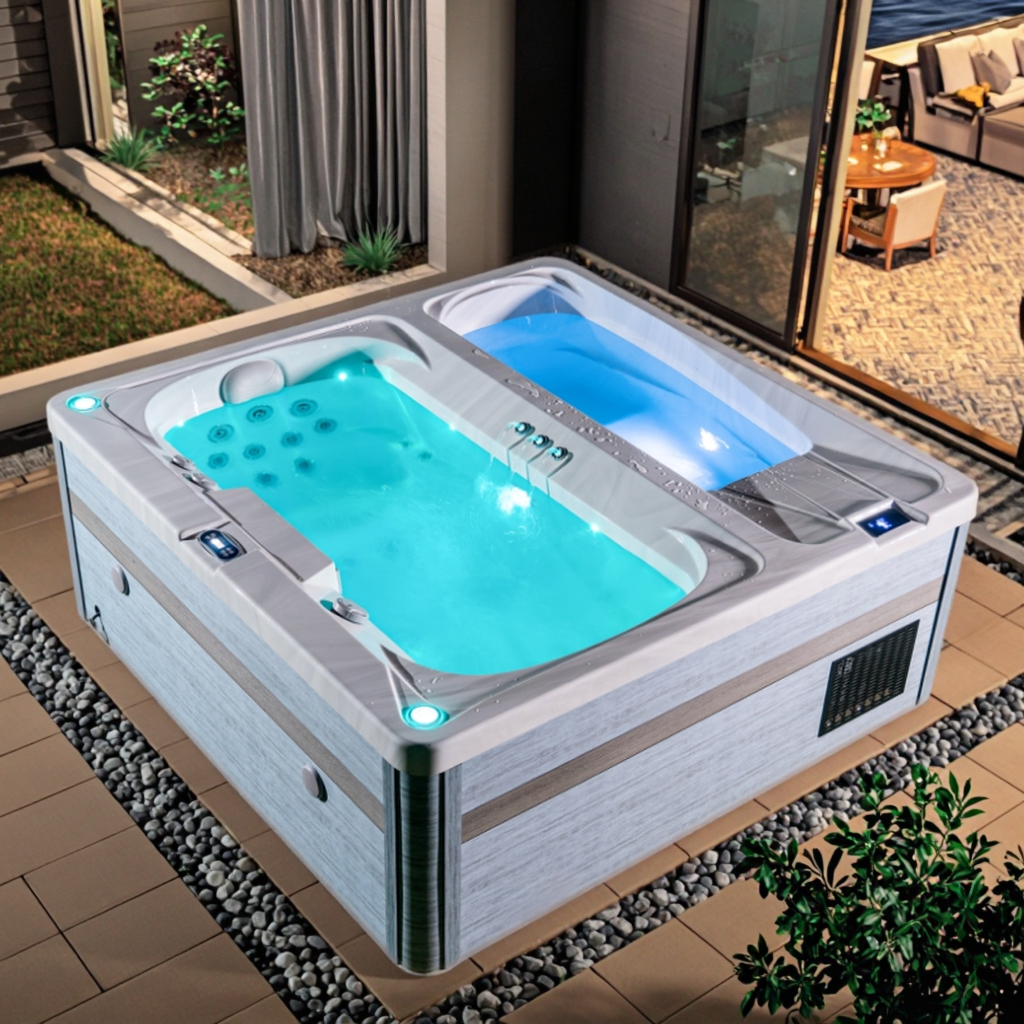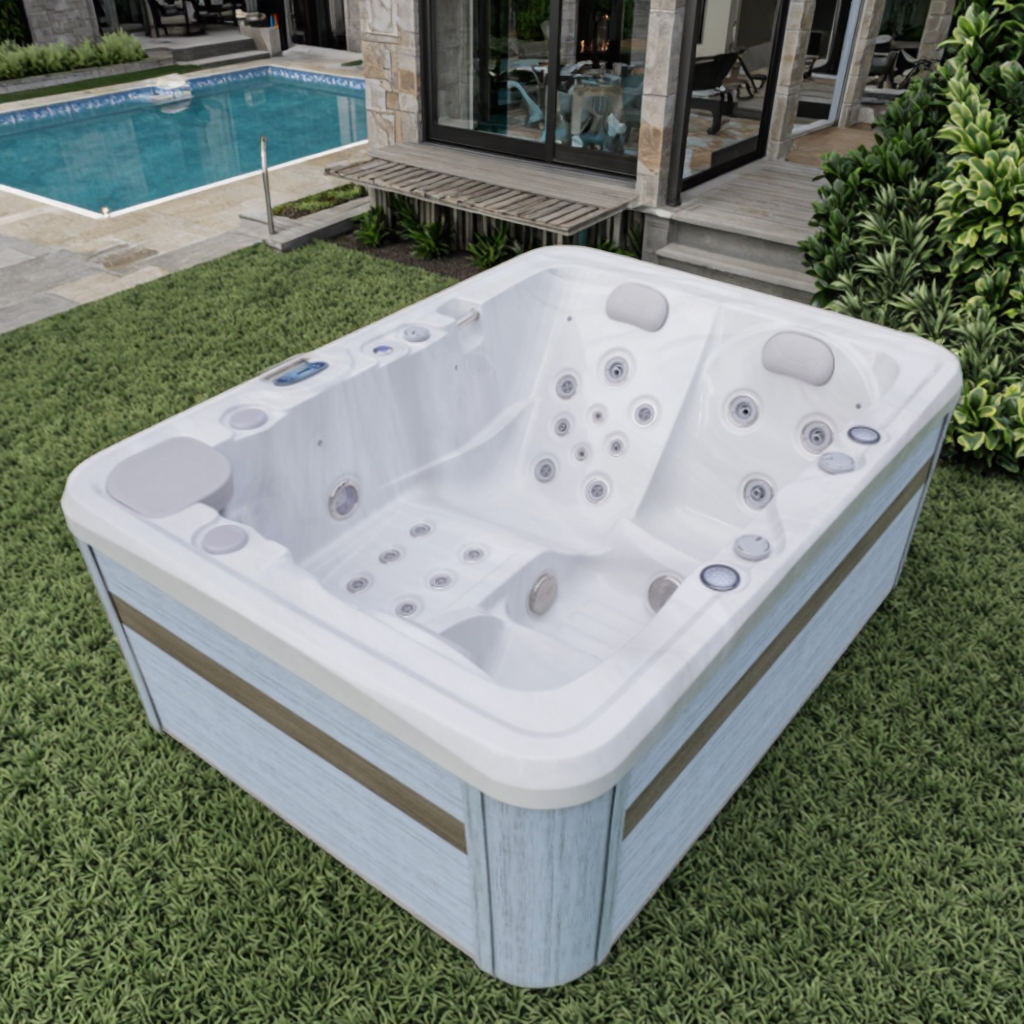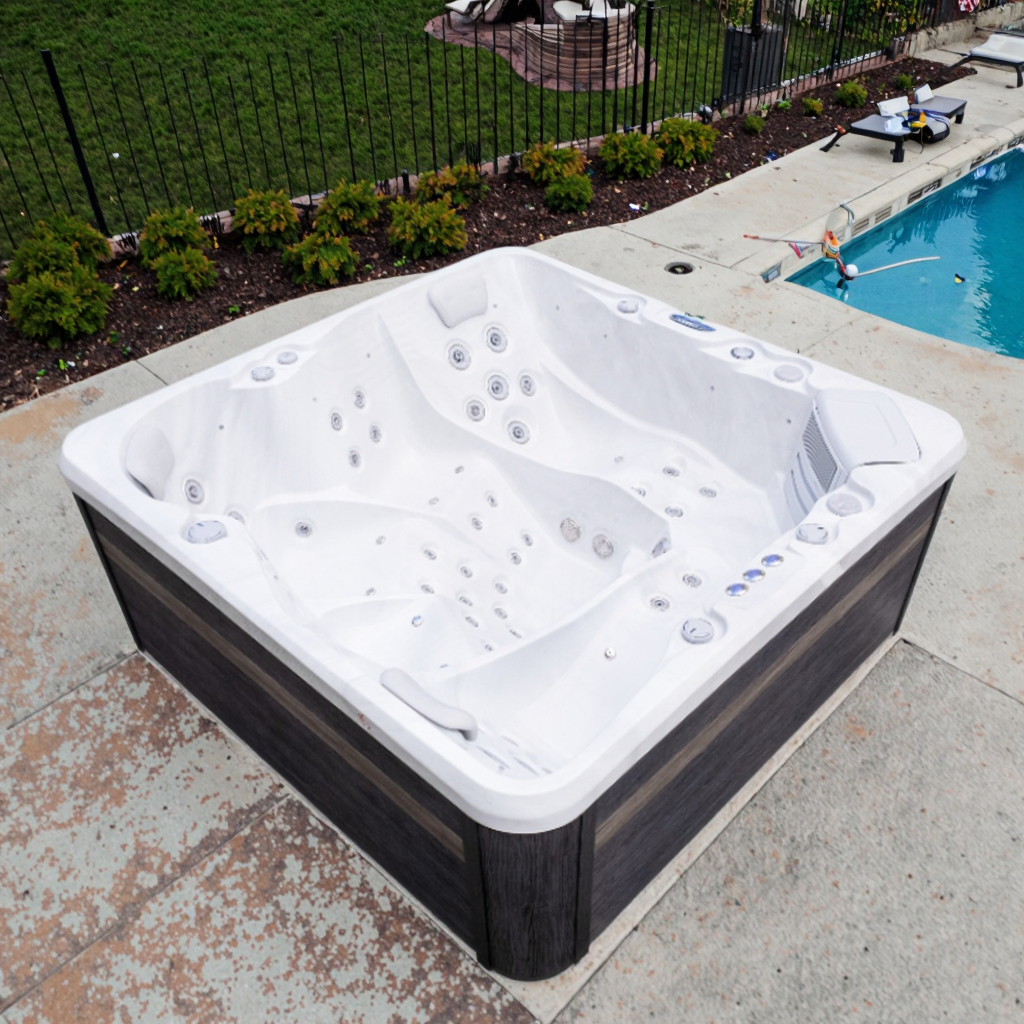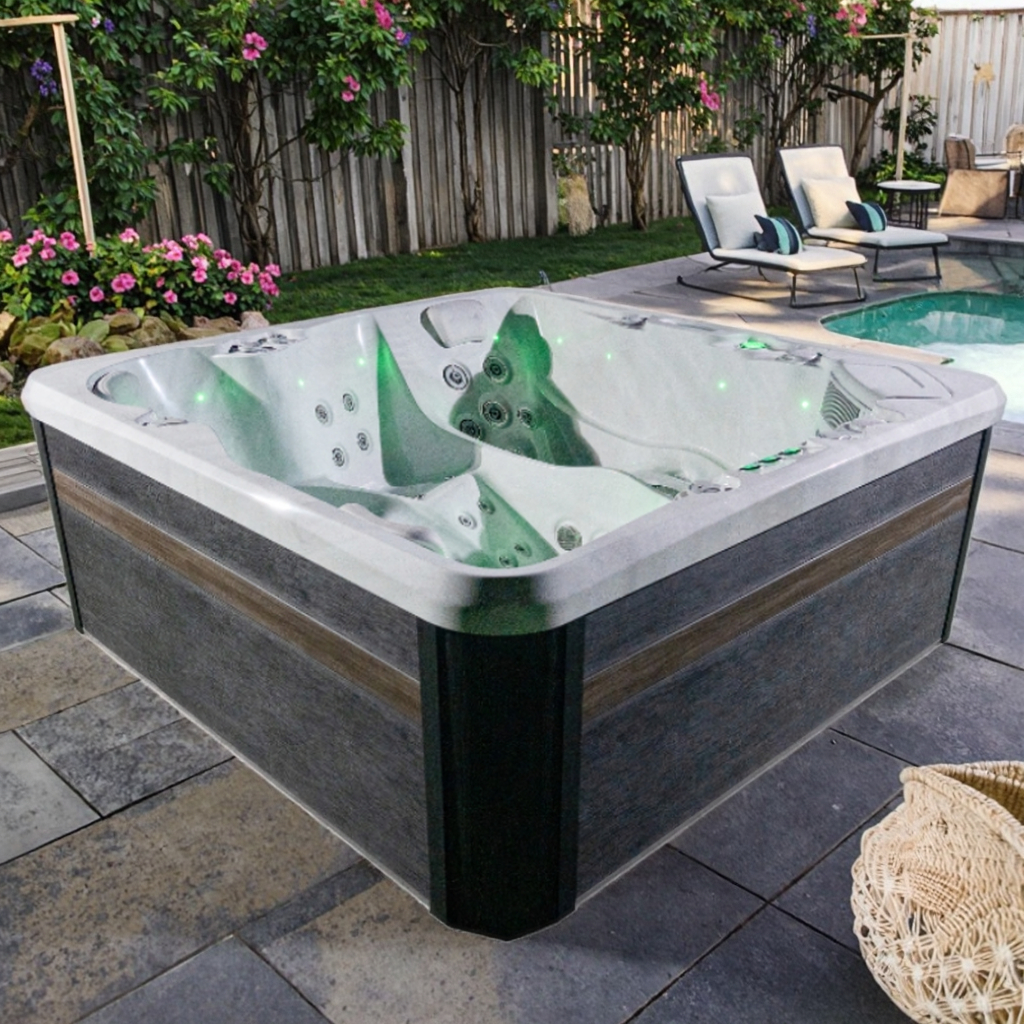
Why can't diabetics use whirlpool spa hot tub?
2025-08-06 15:35Whirlpool spa hot tub has gradually become a choice for many people to relax, relieve fatigue, and improve muscle soreness. This equipment heats the water and uses strong water flow to form a vortex to simulate the effect of massage, combined with constant temperature heat therapy and bubble stimulation to achieve a deep hydrotherapy experience.
For diabetics, whirlpool spa hot tub may not be a safe choice for relaxation. Although the comfortable experience it brings is very attractive to healthy people, due to the special physiological risks of diabetics in nerves, circulation, metabolism, etc., using whirlpool spa hot tub may induce serious health problems.
This article will professionally analyze why diabetics cannot use whirlpool spa hot tub, and explain from multiple aspects such as physiological mechanism, working principle of equipment, risk assessment, possibility of complications, environmental control requirements, etc., to help readers fully understand the medical logic and technical background of such taboos.

The structure and usage characteristics of whirlpool spa hot tub
1. The structure of whirlpool spa hot tub
Whirlpool spa hot tub usually consists of the following parts:
· Heating system: heat the water to between 38 and 42°C to maintain a constant temperature;
· Water pump and nozzle system: push the water flow to form a vortex, and perform local or full-body massage on the user's body;
· Bubble device: generate bubbles by spraying air to gently stimulate the skin;
· Constant temperature control and timing device: ensure the balance of heating and prevent temperature abnormalities;
· Filtration and disinfection system: keep the water clean and reduce bacterial growth.
2. Whirlpool spa hot tub usage environment
· Water temperature is continuously high (often exceeding body temperature);
· Long-term immersion (generally 15 to 30 minutes);
· Contact with strong water flow stimulation;
· There are local water pressure differences and skin friction;
· The bubble effect makes the heat in the water penetrate the skin faster.
These characteristics are positive for the general healthy population, but they may bring dangers that cannot be ignored to diabetic patients.

Physical characteristics and risk background of diabetic patients
Diabetes is a metabolic disease characterized by high blood sugar. As the disease progresses, diabetes will cause a series of complications, especially the impact on the nervous system, vascular system and skin system, which greatly reduces the patient's tolerance to the external environment.
1. Peripheral neuropathy
Diabetes patients generally suffer from peripheral neuropathy, which leads to the following symptoms:
· Decreased temperature perception;
· Decreased or abnormal pain sensitivity;
· Dull or loss of tactile sensation;
· Numbness of limbs.
This means that when diabetic patients use whirlpool spa hot tubs, even if the water temperature is too high, the skin is burned or abraded, they may not notice it, thus delaying treatment.
2. Fragile vascular system
Diabetes is often accompanied by microvascular and macrovascular lesions, which are manifested as:
· Poor terminal blood circulation;
· Reduced vascular elasticity and limited expansion;
· Poor wound healing ability;
· Prone to tissue necrosis.
In the high temperature and high pressure environment of the whirlpool spa hot tub, blood vessels are more likely to be compressed or ruptured, inducing potential thrombosis, bleeding and other serious conditions.
3. Decreased immunity
The immune function of diabetic patients is generally weakened, and they are easily infected by external pathogenic microorganisms. Once the skin is damaged, bacteria can easily enter the blood through the microorganisms in the hot tub or the residues in the water, causing serious infection.
What are the hazards of using whirlpool spa hot tub for diabetic patients?
Combining the use characteristics of whirlpool spa hot tub and the physiological disadvantages of diabetic patients, the main risks can be summarized as follows:
1. Risk of scald and thermal injury
Due to the reduced nerve sensitivity, it is difficult for diabetic patients to correctly judge the water temperature. Once the water temperature of the whirlpool spa hot tub is higher than 42°C, it is very easy to cause low-temperature scalds on the skin or thermal damage to deep tissues. Such wounds are very likely to develop into ulcers and even require amputation due to poor blood supply and slow healing.
2. Infection caused by minimally invasive surgery
The strong water flow of the whirlpool spa hot tub has a certain impact on the skin surface, which may form micro-injuries that are invisible to the naked eye. Combined with the decreased immunity of diabetic patients and potential microbial contamination in the water, this micro-injury is very likely to develop into deep skin infection or cellulitis.
3. Risk of hypoglycemia
In the high temperature environment of the whirlpool spa hot tub, the human body's metabolism speeds up, and the absorption rate of insulin may also increase. If diabetic patients do not properly control the dosage of drugs or diet, they are very likely to experience hypoglycemia during the soaking process, which manifests as dizziness, sweating, palpitations, and even fainting and drowning in severe cases.
4. Increased burden on the circulatory system
The whirlpool spa hot tub heats the whole body, causing vasodilation, blood pressure fluctuations, and increased heart burden. Diabetes often coexists with hypertension or heart disease, so it may induce arrhythmia, heart failure or stroke.
5. High incidence of foot injuries
Diabetic foot is one of the common complications of diabetes, manifested as dry skin, keratinization, cracks, nerve loss, and persistent infection. The whirlpool spa hot tub is particularly irritating to the feet, and even slight friction or high temperature may cause irreversible damage.

Whirlpool spa hot tub disinfection and infection risks for diabetics
Although modern whirlpool spa hot tubs are equipped with a variety of disinfection devices, such as ozone, ultraviolet light, chlorination devices, etc., some bacteria and fungi may still remain in the water. For people with a normal immune system, these pathogens do not pose a serious threat. However, diabetics face the following risks:
1. Skin fungal infection
Common fungi such as Candida albicans and dermatophytes can be transmitted through water and multiply rapidly in the moist skin environment of diabetics, inducing skin lesions.
2. Urinary tract infection
If the perineum is moist due to long-term soaking, coupled with the increase in urine sugar caused by diabetes, it is easy to breed bacteria and cause urinary tract infection.
3. Risk of bacterial sepsis
In extreme cases, bacteria can enter the blood through small wounds and cause sepsis, which has a very high mortality rate for diabetics.
Diabetics: Why can't the problem be solved by lowering the water temperature of the whirlpool spa hot tub?
Some people may think: If the water temperature of the whirlpool spa hot tub is lowered to below 37°C, can all risks be avoided?
——The answer is no, for the following reasons:
· Low temperature cannot inhibit bacterial growth, and there is still a risk of infection;
· Neuropathy does not improve due to temperature changes, and there is still a problem of slow perception;
· Strong water pressure and bubble stimulation may still cause skin trauma;
· Long-term contact with water may still cause the foot skin to become soft and cracked.
Therefore, "cooling down" alone cannot solve the core threat posed by whirlpool spa hot tub to diabetic patients.

Medical advice and safe alternatives
1. Unanimous advice from the medical community
Several international diabetes organizations and clinical endocrinology societies have clearly stated:
"Diabetic patients, especially those with peripheral neuropathy, diabetic foot, cardiovascular disease, and immune dysfunction, should avoid using any form of whirlpool spa hot tub."
2. Alternative methods
Diabetic patients can choose the following gentle methods under the guidance of a doctor to achieve a relaxing effect:
·Warm water foot bath (no more than 15 minutes, water temperature 35-37°C);
·Gentle water flow bath, no bubble impact;
·Medium temperature wet compress heat therapy (such as hot water bottle on the back);
·Dry infrared sauna (doctor's permission required);
·Massage equipment instead of spa.
Can I get a quote for a specific spa model?
Yes, we provide detailed quotes within 24 hours of receiving your inquiry. Just send us your specifications, and our sales team will offer competitive prices based on your quantity and customization requests. Whether you’re looking for a cheap entry-level spa or a luxury model for resale, we’ll prepare a custom quote that fits your purchasing plan. Factory-direct pricing available.
